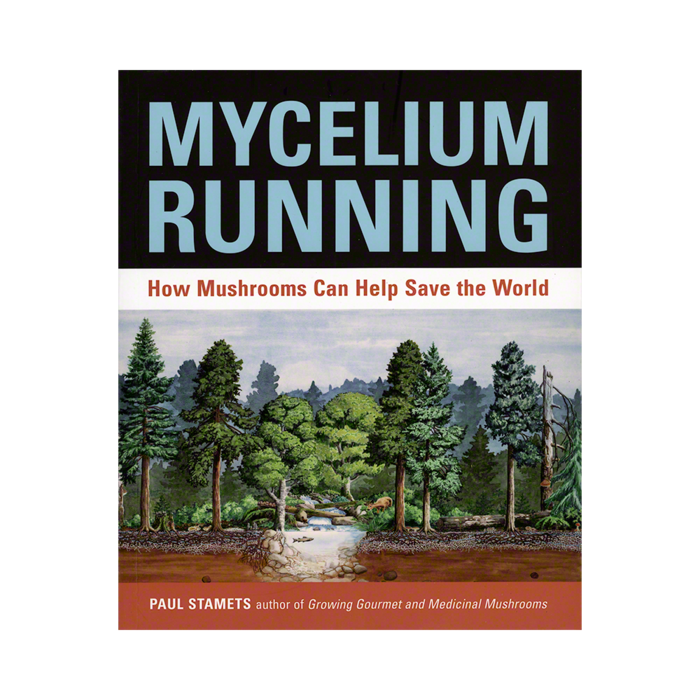
Mycelium Running by Paul Stamets (2005)
Today, I would like to present a much-awaited review of a book on fungi (pronounced fun-ji), by one of the leading myco experts, Paul Stamets. This is the type of book that will change the way you think about Life, and our place in the Universe. It has inspired me at a time when I have been considering a change in the direction of my career towards sustainability. This one is no-brainer 5/5 stars.
I. Overview of Mycelium Running

Holo-Fractal Pattern (from left to right): Tree branches; Brain blood-vessels; Mycelium; Macro Cosmic structure.
The mycelium, the central pillar of this book, refers to the fungal network that is the hearts and minds, of which mushrooms are fruits of. The mycelium is responsible for absorbing and processing the nutrients from the environment, as well acting as an informational portal between each individual nodes called hyphae, that make up the whole mycelium. Last year, I attended Paul Stamets’ conference in Vancouver, where he described the holographic-fractal structure of mycelium, reflecting that of the world-wide web, as well as that of our Universe. I have much more to say on the metaphysical relationships between Us, and the Myco-cosm. But I digress.
Paul Stamets’ book is an incredible compendium on the power, and diversity of the fungi world that sustains our ecosystems. The 356-pages book is divided into three parts addressing in order: the history; the various uses; and an illustrated guide to grown your own fungi in your backyard.
Like Water, fungi are probably one of the most overlooked natural elements in our sciences today. Thankfully, many cultures particularly in the non-Western world, still maintain a long tradition with the fungi world. China and Japan as an example, typically consume a variety of mushrooms witin their diets, each designed after specific ailments, such as cordyceps, shiitake, enoki, or reishi, to name just a few.
According to Stamets, while not all mushrooms are gourmet (edible) ones, all mushrooms are medicinal, which is something to keep in mind. Most importantly, the mycelia serve as a critical infrastructure for the well-being of forests, serving an underground highway that provides trees and plants with the essential nutrients, as well as retaining moisture in the soil, which ultimately results in the restoration of a thriving flora & fauna.
Instead of paraphrasing the whole book, let me focus on some of my favourite applications of fungi described in the book, in chronological order: Myco-remediation, myco-forestation, and myco-pesticides. For lack of space, I will only focus on the remediation part.
Myco-Remediation refers to the application of bio-technology based on the use of mycelium to fix ecological disasters. One example cited in the book, is the several miles-long micron-scale web of mycelium that effectively filters various bacteria (such as E.coli) and pathogens in rivers and streams, especially those that are nearby farms which pose a risk of contamination.
The first example of myco-remediation is the Oyster mushroom’s ability to thrive on toxic, and oil-polluted soils. Below, I present a few passages from the book, showing how Oyster mushroom are growing vigorously on oil-spilled straw. The result being that the mycelium not only absorbs the toxic particles, but it ingests and grows from them, leaving behind a clean patch of soil, with signs of plant growth.
The second, and perhaps best example of myco-remediation I wish to present, is the case of radioactive contaminants that pose great health-risks, often found at nuclear disaster sites, such as Tchernobyl, or the on-going crisis at Fukushima Daiichi Plant in Japan. The usual suspects in this case are heavy-metal particles such as cesium, but also others lead, mercury and arsenic which can sometimes leak into our water sources. The author even presents a chart with the most effective strains for a given particle.
Since then, Paul Stamets has addressed, and even proposed his ideas on how to remediate the Fukushima contamination using his expertise with myco-remediation. Not only is this enlightening, but it is one of the most effective, and low-tech-low-cost methods of potentially decontaminating this catastrophic mess. As hard as it is to believe, the current protocols for dealing with contaminated soil is to simply burry them underground, or worse yet, incinerating them, which poses a health risks by dispersing cesium-clouds. Instead, here is a tentative drawing of secure cordon based on Paul Stamet’s article above:
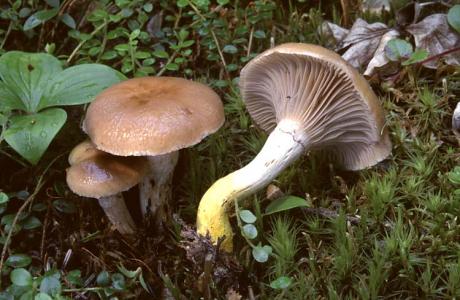
Gomphidius Glutinosus is adept for cleaning radioactive sites. From https://www.permaculture.co.uk/articles/how-mushrooms-can-clean-radioactive-contamination-8-step-plan 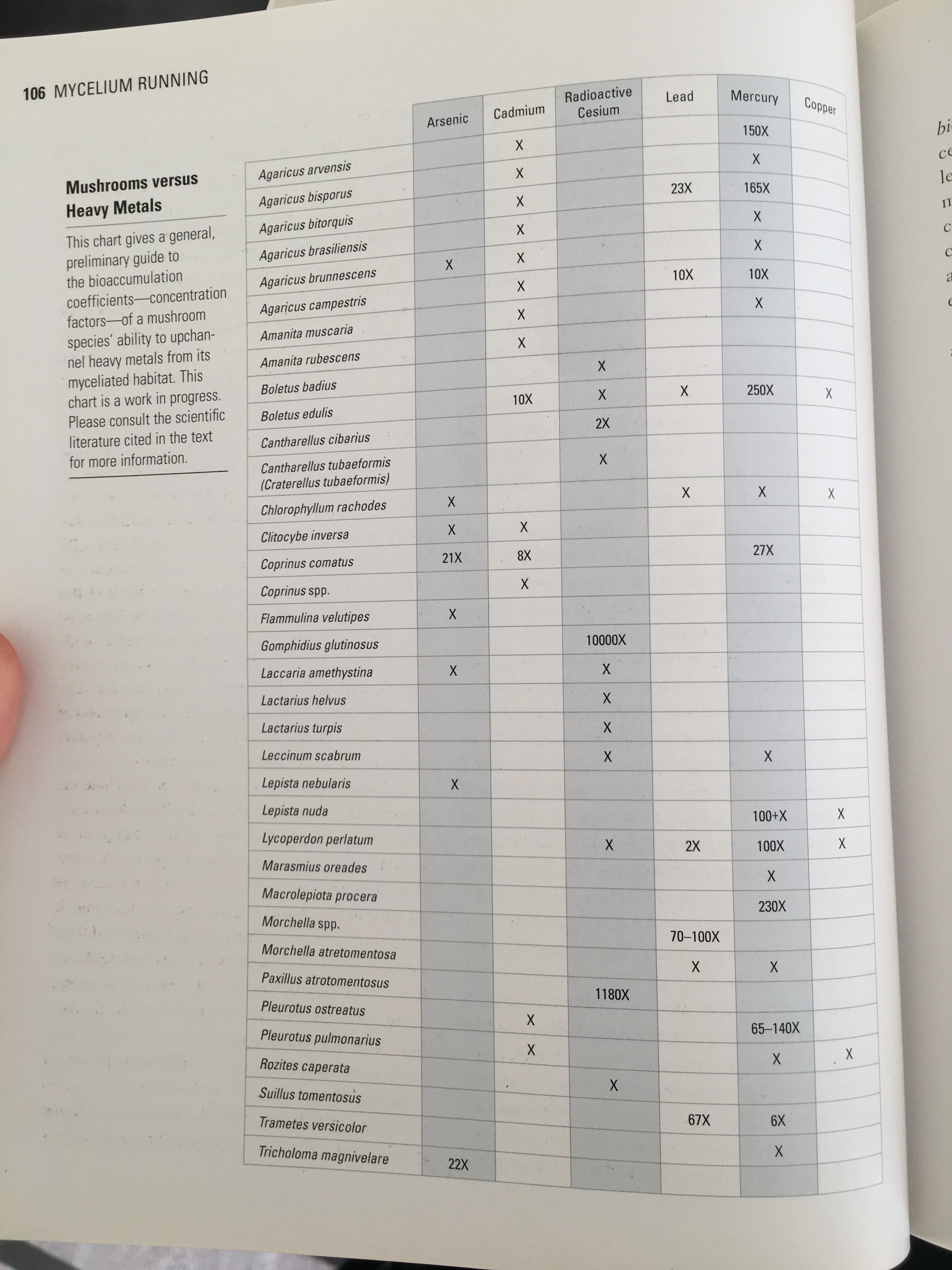
Fungal chart showing heavy-metal-friendly strains. 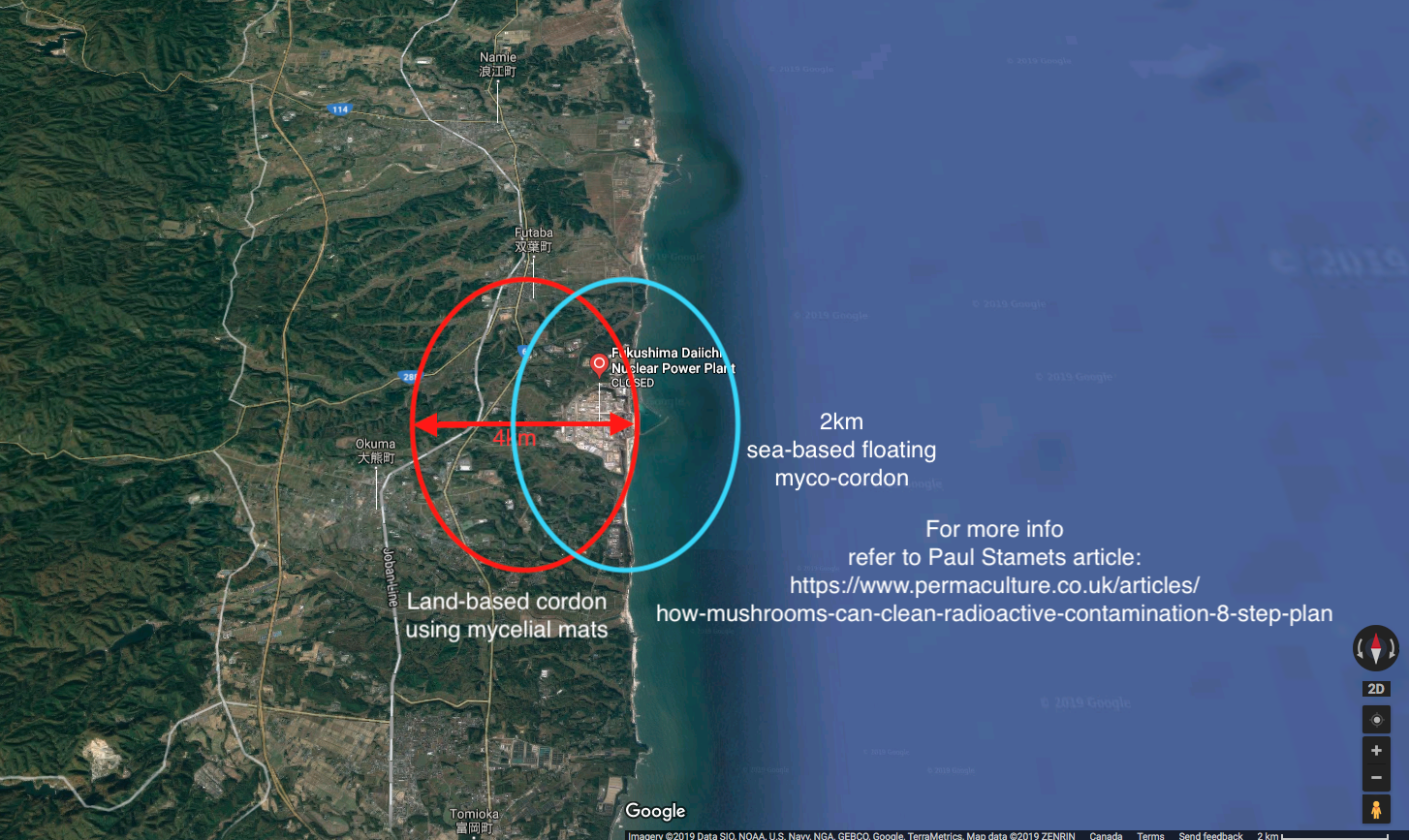
Doodle of potential decontamination plan
based on Paul Stamets ideas.
In conclusion, Paul Stamets’ book Mycelium Running, is not only a fascinating insight into the world of fungi, it is exceptionally relevant in the context of our current ecological crisis, bringing forward innovative, and relatively low-costs/low-tech methods of cleaning up our environment. Best of all, the ease with which fungi can be grown by individuals using nothing but common debris (woodchips, mulch, organic waste) makes it one of the most clean and versatile tool we dispose of. The insights contained herein are timeless, and brings together a potential cross-pollination of divergent fields, including sciences.
Another one of my favourite stories, is the inherent intelligence exhibited by mycelia in various experiments. It is presented in the book, but elsewhere as well, regarding the maze experiments where the mycelium is able to navigate the correct pathway to its food source. This phenomena was in fact harnessed by Japan’s railway engineer to create the most efficient train-routes. Isn’t this incredible? I could also talk about the crucial importance of the gut-biome, but maybe another time, okay?
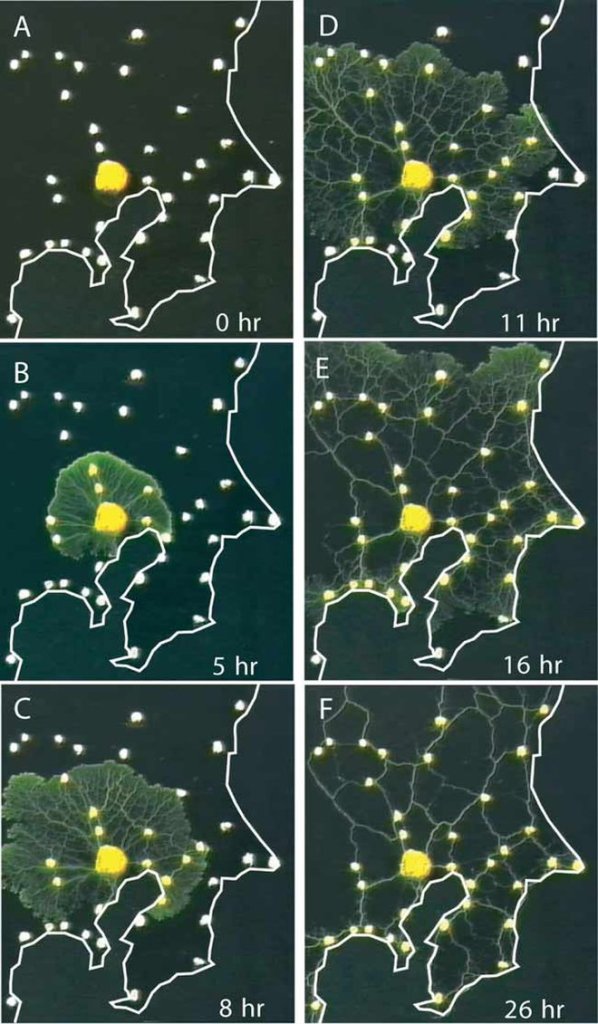
Slime design mimics Tokyo’s rail system: Efficient methods of a slime mold could inform human engineers (ScienceDaily, 2010)
Last but not least, I highly recommend anyone interested in this subject to check out Joe Rogan’s episode #1035 featuring Paul Stamets, where they delve into the rabbit hole of both Stamets’ personal hero’s journey, all the way down to how psilocybe may in fact be a transcending wormhole-portal to the cosmic mycelium. Have a little smoke if it helps you digest the content. We should all take-away some wisdom from our mycelial cousins, and use the principles of biomimicry to create a world based on harmony.
Big thanks to my audience, you the reader, for taking the time to read my blog. Please leave a comment below, or any feedback you may have.
In the next part, I will address the inspirations from the Blue Economy, as well as How to Get Started which will include my own (current) experiments with growing oyster mushrooms at home, using nothing but coffee-grind waste and cardboard. Welcome to Myco-Cosm.
Credits: Cover photo by Martin Bridge, taken from https://m.alexgrey.com/blog/mycelial-magic/
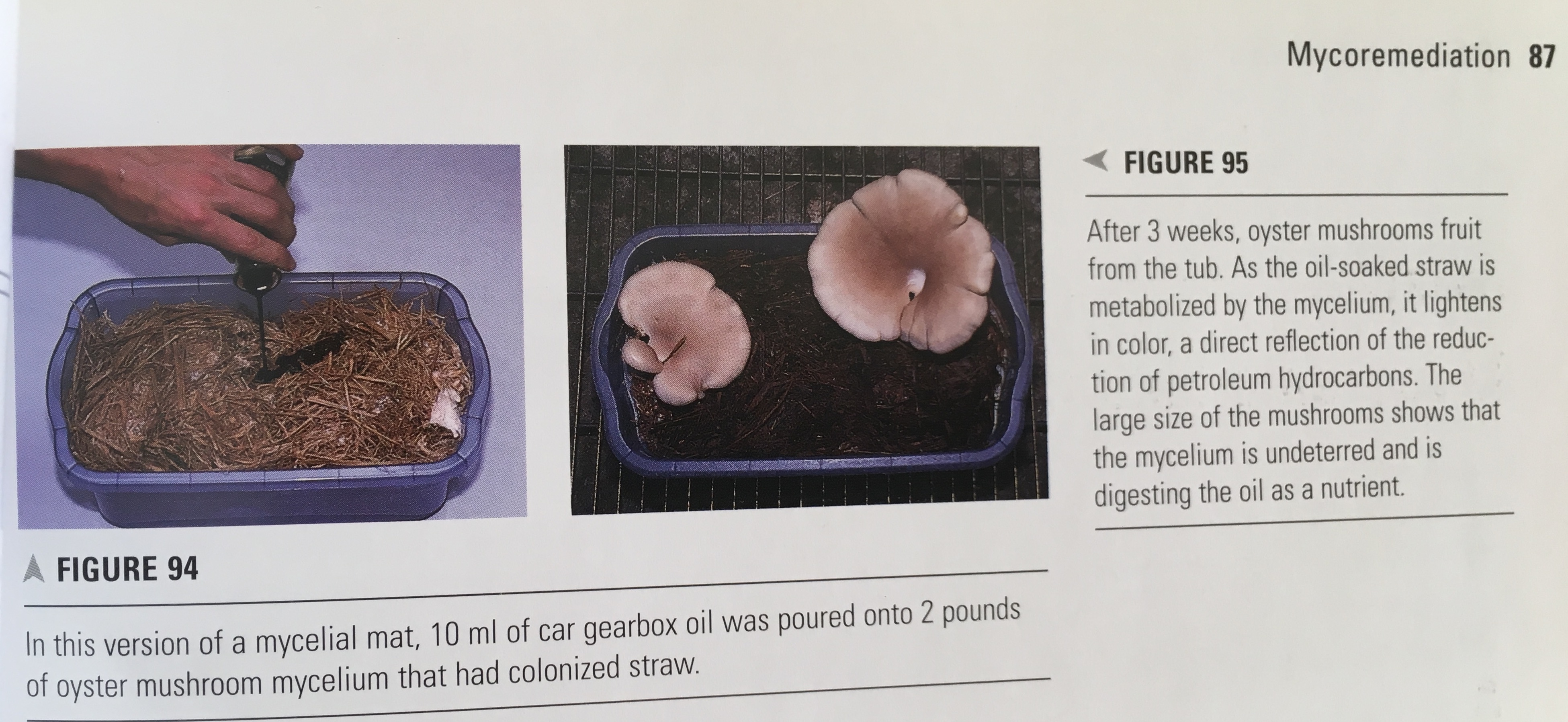
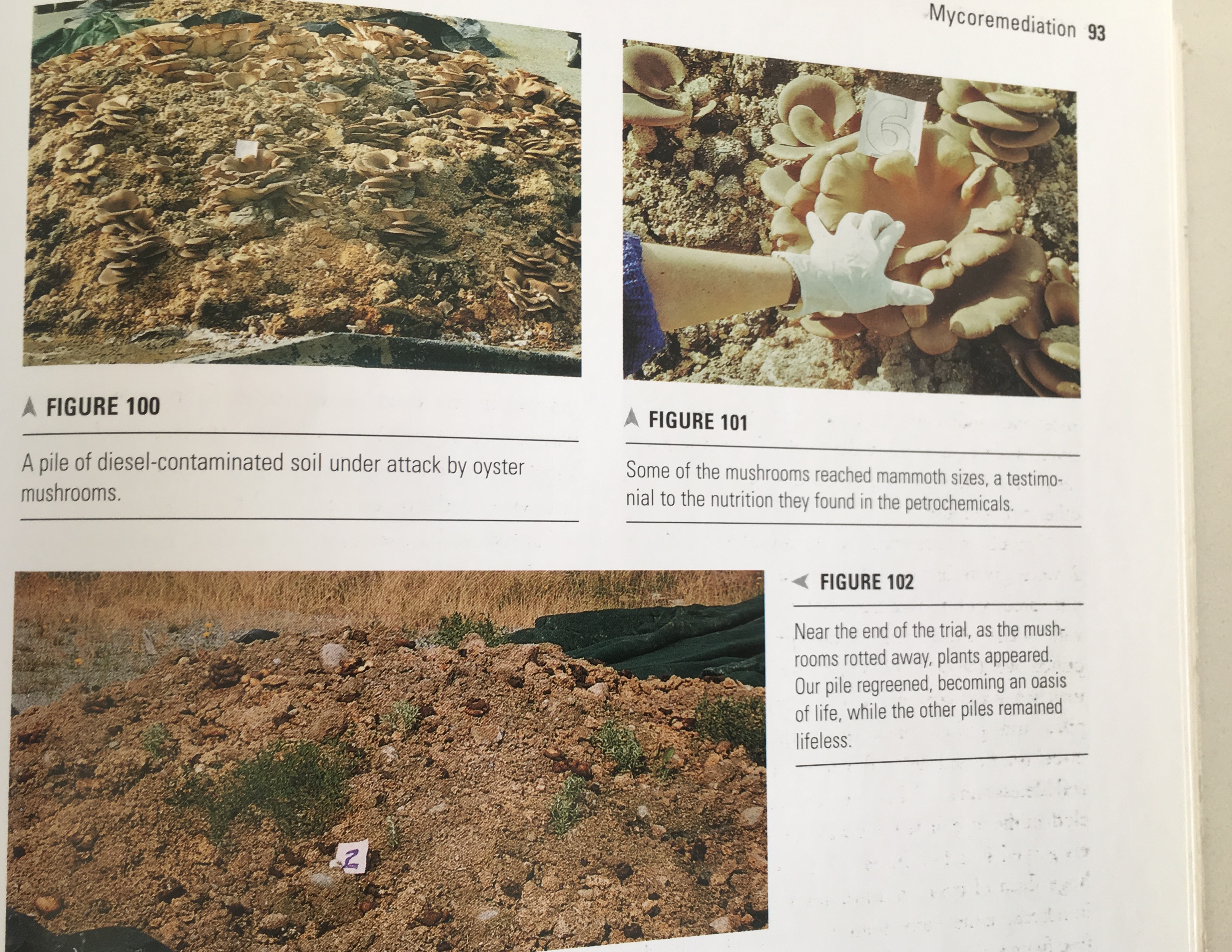
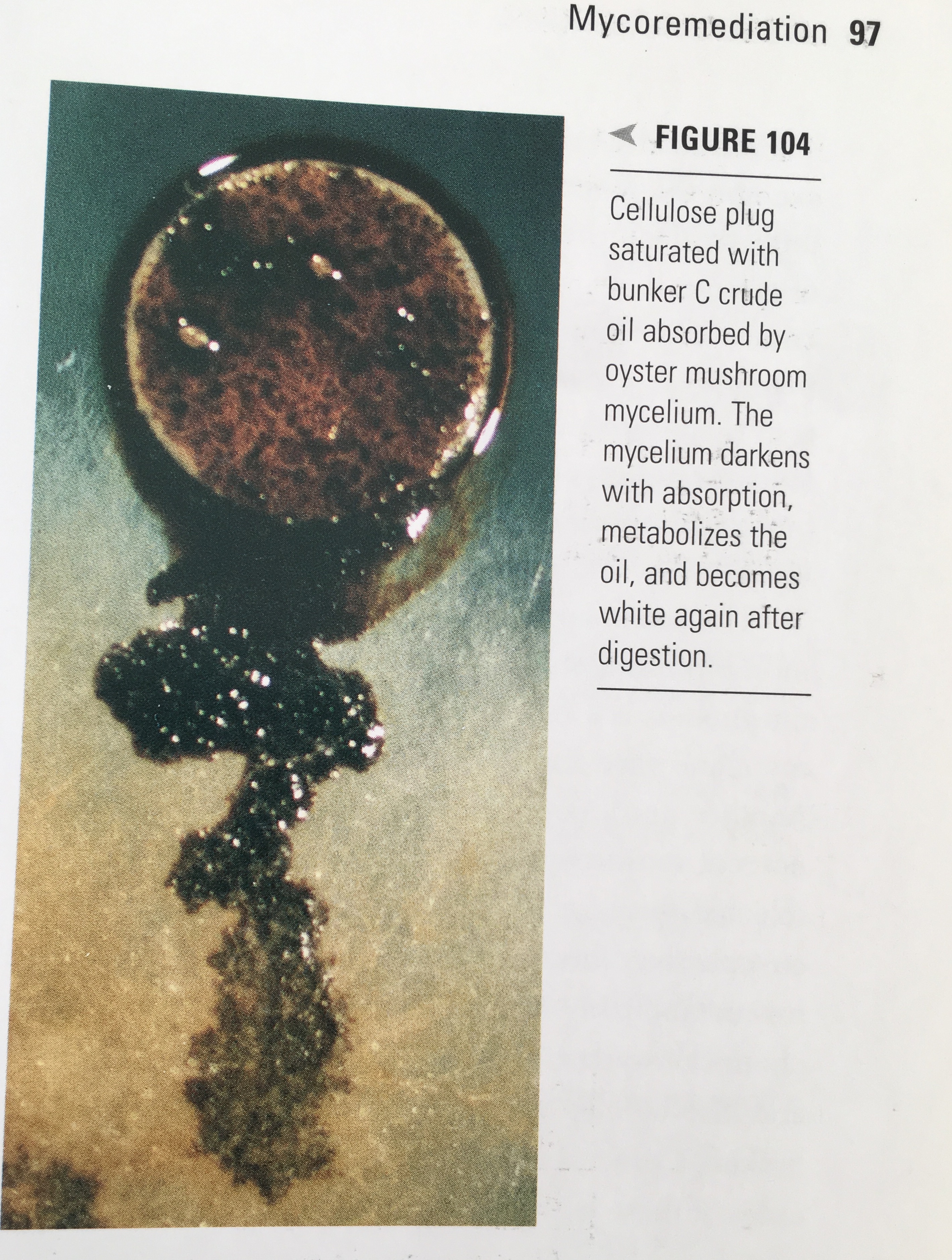
One thought on “Review: Mycelium Running (2005) by Paul Stamets”